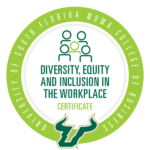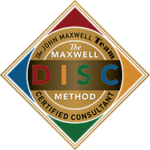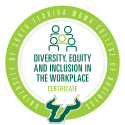In the business world, diversity should be seen as a strategic advantage. Why? It’s quite simple. Diverse organizations are better able to innovate and find new solutions to problems. Additionally, they are more likely to be successful in attracting and retaining talent. However, even with the positive effects of having a diverse workforce, many people remain skeptical of the benefits. Some managers worry it will lead to division and conflict. Yet, research clearly shows diversity can be a key ingredient for organizational success.
Diversity Defined
Diversity in the workplace has been a hot button issue for many years. What does it mean, and how can it be achieved? The definition of diversity is broad, but at its core, it refers to inclusion and equity of everyone. When a company embraces diversity, it means everyone in the organization is treated fairly and has an opportunity to succeed, regardless of their background or personal characteristics. This includes race, ethnicity, gender identity, sexual orientation, religion, age, and disability status.
We should not forget diversity is displayed inwardly and outwardly. Employers often think of external physical, geographic or socioeconomic traits, however, these are not the only elements to a diverse workforce. While these attributes are sometimes the most obvious, they are not the only traits. Diversity of thought, personality, professional experience and education can all bring amazing benefits to a stagnant organization and provide fresh ideas, insight, and perspectives.

There are many reasons why embracing diversity is important. First and foremost, it’s the right thing to do. Every individual deserves to be treated with respect and dignity. Secondly, a diverse workforce is more innovative and creative. Team members from different backgrounds bring different perspectives to the table, which leads to better problem solving and improved outcomes.
Research has shown a diverse workforce can be beneficial for businesses. A study by McKinsey & Company found companies in the top quartile for racial and ethnic diversity were 35% more likely to have financial returns above their respective national industry medians. Even more, a study by Harvard Business Review found 83% of employees said they would prefer to work in a company with a diverse workforce.
While employers are beginning to realize the importance of workplace diversity and are making efforts to create more inclusive workplaces, there is still a lot of progress to be made.
The Power (and Benefits) of Diversity
The power of diversity is often overlooked in our society. A recent study found a more diverse workplace leads to better decision making and problem solving. The study, conducted by the University of Toronto’s Rotman School of Management, looked at data from over 2,000 companies around the world. It found those with gender diversity were 15% more likely to have returns above their industry median.
Why is this? The study’s authors say that having a diverse team allows for different ways of thinking and creates a more competitive environment. “Inclusive environments – where employees feel like they can be themselves – unleash the power of cognitive diversity,” said Scott Page, the lead author of the study.
When it comes to the workforce, diversity is a key ingredient for success. A recent study by McKinsey found companies in the top quartile for racial and ethnic diversity are better at problem solving and can come up with more innovative ideas.
Additionally, a diverse team reflects the customer base a company serves, making it better equipped to understand and cater to its needs. And finally, when teams come from different cultures, they can learn from each other and develop new ways of working together.
Challenges of Diversity
When most people think of diversity, they may think of the different races, religions, and cultures that make up a community. However, diversity extends beyond those visible characteristics to include all the different ways people experience life.
Though it is often claimed diversity is a strength, in practice it can be difficult to manage. For one thing, achieving diversity can be challenging because it requires effort from everyone involved. It is also difficult to maintain because it can be easy for people to become complacent or forget why diversity matters in the first place.
How organizations handle diversity has a significant impact on their employees. A study by the Society for Human Resource Management (SHRM) found that when organizations have diversity and inclusion initiatives in place, employees are more satisfied with their jobs, feel that their voices are heard, and are more engaged in their work.
Despite these benefits, many organizations struggle to create an inclusive environment. According to the 2016 Deloitte report “The State of Inclusion in the U.S. Workplace”, only 30 percent of survey respondents reported that their company was doing a good job at creating an inclusive environment.

There are several reasons for this disparity. One key reason is many organizations lack the necessary data to understand the scope of the diversity challenge they face. Many people would agree embracing diversity is important for both personal and professional growth. However, statistics show minorities are often underrepresented in corporate America. A recent study conducted by the Executive Leadership Council found only 3 percent of senior executive officers at Fortune 500 companies are Black, and 5 percent are Hispanic.
There are many factors that contribute to this lack of diversity, including a lack of access to education and networking opportunities, as well as unconscious bias on the part of recruiters and hiring managers. To increase diversity in the workplace, businesses must first acknowledge the challenges involved and make a concerted effort to overcome them.
Diversity Management and Return on Investment
The business case for diversity management is well established. In fact, there are a number of studies that show a positive correlation between diversity and organizational success. In order for businesses to remain competitive in the global marketplace, it is important they embrace diversity management practices.
Diversity management refers to the proactive steps employers take to create and maintain a workplace that respects and values the individual differences of employees. Employers who want to reap the benefits of diversity must first understand embracing diversity is not just about checking a box or ticking off a list of goals.
There is a growing body of evidence to suggest diversity management initiatives can lead to a significant return on investment (ROI) for employers. The ROI of diversity management initiatives comes from multiple sources, including increased employee productivity, creativity, and innovation, reduced turnover and recruitment costs, and enhanced customer satisfaction.
In order to achieve a successful ROI from diversity management initiatives, employers must first assess their current state of diversity and identify areas where they can improve. Once the areas of improvement have been identified, employers can put in place specific strategies and programs to address these areas.
Finally, it is important to track the progress of these initiatives over time and make changes as needed in order to continue achieving positive results.
Another study by SHRM found nearly 60 percent of organizations report a positive ROI for their diversity and inclusion initiatives. The study also found when properly executed, diversity management can improve organizational performance in a number of ways, including increased innovation, better problem solving, and enhanced employee engagement.
Given these findings, it’s no surprise an increasing number of employers are making diversity and inclusion a top priority. However, achieving success in this area can be challenging, and many organizations find themselves struggling to create an effective diversity and inclusion program. XcelMil can help in this area, it is one of our specialties.
Conclusion
Diversity is a strategic advantage to organizations. By leveraging the unique perspectives and experiences of employees from different backgrounds, companies can create a more innovative and productive workplace. Diversity also helps organizations better understand their customers and respond to changing trends. By embracing diversity, companies can access new markets, tap into new sources of talent, and improve their bottom line. To reap the benefits of diversity, organizations must create an inclusive environment where everyone feels welcome and valued. Only then will they be able to capitalize on the innovative ideas and perspectives that diverse employees bring to the table.
Does your organization have a fully developed DEI strategy or plan?
Book a consultation with us now! Please do not hesitate to contact us with any questions. We would love to hear from you. Email at [email protected].
Click here https://xcelmil.com/xcelmil-coaching-and-consulting-services/ to learn more about our services. Twitter: https://twitter.com/GraticMelody
LinkedIn: https://www.linkedin.com/in/melodygraticconsulting/
XcelMil, LLC is a certified Minority-Woman and Service-Disabled Veteran-Owned Small Business specializing in Executive Management Consulting and Leadership Development Training.































